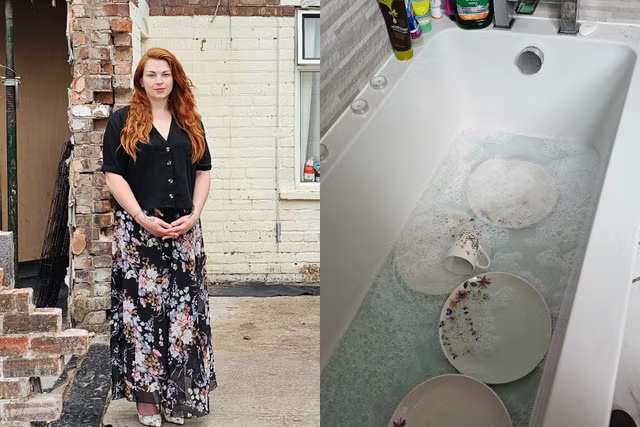Hot weather can impact so many aspects of our lives, including our homes.
With rising temperatures on the horizon ahead of summer and the constant changes in the environment, it has become more important to know how to preserve things.
Lisa Grosse, brand manager at Cedral said: “The world is facing major challenges when it comes to our climate and here in the UK, our homes are not equipped to deal with extreme temperatures.
“As people grapple with trying to keep their homes cool with gadgets, tech and garden shading, designing a home for extreme heat from the start must be something the UK renovation and homebuilding sector prioritises over time.
“Materials matter in heat. While most building materials are designed to withstand some degree of expansion and contraction, excessive heat can push these materials beyond their limit.

“If your home has a facade, or you are looking to add one, then do your research. Heat or overexposure to sunlight can result in warping and bulging, and can even affect the structure.
“For example, a timber facade can not only bleach in colour in consistent direct sunlight but it can also warp and expand. This can damage or create gaps in the facade and as a consequence, this could mean you end up with a leak later in the year.”
So what exactly are the unexpected things that can happen to your home in hot weather? Experts share everything you need to know.
Bacteria and mould
For Rhiannon Johns, head of brand and interior designer at Piglet in Bed, hot weather can affect various things around the home, including soft furnishings.
“In high temperatures and humidity, soft furnishings can become susceptible to bacteria and mould growth,” said Johns.
“Absorbing moisture from the air, they make the perfect breeding ground for bacteria and mould.
“To avoid this as much as possible, make sure you keep windows open throughout the day to allow fresh air to circulate through. When it comes to bedding, the addition of sweat will increase the moisture levels, so try hanging your duvet outside to aerate in the sun, this will help to dry it out and the sun’s rays will help to kill any bacteria.”
Damage to surfaces

Various decorative items can also pose some risks.
“We all like to decorate our home with accessories such as candles and mirrors, however in high heat, they could cause a few issues,” said Johns.
“Candles are likely to melt when temperatures start to rise, so you’ll want to avoid leaving them out, especially as you run the risk of ruining tablecloths or the surfaces beneath the candles once the wax melts.”
House fire
Mirrors are the biggest cause for concern when it comes to interior decor.
“If direct sunlight shines onto a mirror, its rays can focus through it, creating a hot spot on nearby surfaces. If this surface is flammable, there is a chance that it could ignite. The hotter the day, the higher the chances of this happening,” said Johns
“To avoid a house fire, make sure to shut your blinds during the day if you are out of the house, this will stop the sun’s rays from getting in and making contact with any mirrors.
“If you are at home, keep an eye out for any light being directed by your mirrors, and where you can move any mirrors out of the way of any direct sunlight.”
Humidity

The hot weather can cause your home to become humid, which can be a problem for other bits of furniture.
“High temperatures here in the UK are often paired with high humidity because of the wetter weather throughout the rest of the year,” said Becky Lane, energy efficiency expert and CEO at Furbnow.
“Increased humidity in your home has a significant impact on the air quality. Higher humidity decreases air circulation in your space and that can cause a build-up of pollutants.
“To combat the humidity in the heat, using fans or creating a breeze through your home can help improve air circulation and reduce a build-up of pollutants in your home.
“To reduce the humidity for good, having an A/C unit or installing permanent ventilation in your home can make sure humidity never builds up in your home and you always get a constant flow of fresh air.”

Johns agreed and added: “Humidity can cause wooden furniture to warp and expand, so you might find that cabinet doors or draws no longer seamlessly fit into their closed positions.
“As we know, humid air contains moisture, and with increased levels of humidity inside the home during hot weather, artwork and paintings could become damaged. The moisture in the air could lead to condensation in frames, making the perfect breeding ground for mould.
“To avoid this, keeping the humidity levels down in your home is key. I would recommend intermittently running a dehumidifier to keep moisture levels to a minimum. To make this more affordable, you can purchase moisture absorbers that you can sit in different areas of your home to absorb moisture.”
Disclaimer: The copyright of this article belongs to the original author. Reposting this article is solely for the purpose of information dissemination and does not constitute any investment advice. If there is any infringement, please contact us immediately. We will make corrections or deletions as necessary. Thank you.



